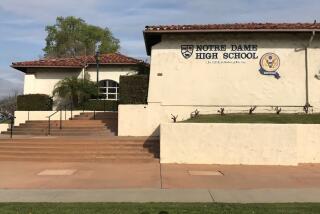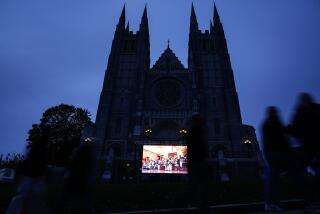Newtown 911 calls released; fear, desperation heard in voices
NEW YORK — “Newtown 911, what’s the location of your emergency?”
The voice on the other end shook with fear.
“Sandy Hook school,” the woman said. “I think there’s somebody shooting in here.”
It was the first call received by police in Newtown, Conn., the morning of Dec. 14 after Adam Lanza had shot his way into the elementary school and begun rampaging down the corridors and into classrooms.
When he was done, 20 first-graders and six school employees lay dead.
Lanza, 20, who had shot his mother, Nancy, to death in their Newtown home, then killed himself.
Nearly a year after the massacre, detailed records of the police investigation and some of the 911 calls have been made public, despite efforts by many in Newtown and Connecticut to keep them sealed. Families of most victims contended that putting details of the horrible day in the public domain would only make it more difficult to recover from their loss.
The state last month released a 48-page summary of the police report, which revealed Lanza’s obsession with mass murders, his antisocial behavior and the easy access to weapons he had in his mother’s home. But the report did not shed light on why Lanza targeted Sandy Hook Elementary School.
Last month, a judge ruled that the state’s Freedom of Information Act mandated that the 911 calls made to Newtown police be released, and he ordered it done by Wednesday. At 2 p.m., police posted the recordings online, revealing both the terror of the morning and the calm demeanor of police dispatchers who tried to reassure callers as gunfire echoed through the halls.
“Somebody’s got a gun. I caught a glimpse of somebody,” the woman who made the first call said anxiously to the 911 dispatcher as the rampage began.
“They’re running down the hall. They’re still running, they’re still shooting,” she said before pleading again for police to come. “Sandy Hook school, please.”
By then, police were juggling calls from others in the school and from friends and relatives of people who worked there. One man called to say his wife had texted him from Sandy Hook that there was a shooting. A young woman said she had a friend at the school. “I hope she’s OK,” she said when a dispatcher assured her that police were on their way.
All of them knew something was wrong, but nobody knew exactly what was happening.
“I believe there’s shooting at the front glass. Something’s going on,” the school’s custodian, Rick Thorne, told police after Lanza shot out the windows near the school’s locked front door to gain entrance.
Thorne said the school was locked down and all the children were in classrooms, but he remained in a corridor, even as the sound of gunfire became clear over the phone.
“I’m close,” he told the dispatcher, who told him to “take cover.”
“I keep hearing shooting,” Thorne said. “I keep hearing popping.”
PHOTOS: Newtown school shooting
In Room 1, a teacher who had been shot in the foot called in. There were children huddled in the room with her and two other adults.
The dispatcher urged her to apply pressure to her wound. “We have people coming, OK?” the dispatcher said. “Are you OK right now?”
“For now, hopefully,” the teacher replied.
A teacher in a different room also called in.
“It sounds like there are gunshots in the hallway,” she told the dispatcher, who asked whether her pupils were safe inside the classroom. They were, but the teacher said she needed to lock the classroom door.
“Keep everybody calm, keep everybody down,” the dispatcher said. “Get everyone away from the windows.”
Much in the recordings was difficult to decipher, but the fear and desperation in callers’ voices were clear. Also clear was the 911 dispatchers’ determination to keep the callers, and themselves, calm as they deployed first responders, pressed terrified callers for information and assured them that help was on the way.
In his ruling ordering the calls’ release, Bridgeport Superior Court Judge Eliot Prescott, who listened to the tapes, said the recordings were “harrowing and disturbing.” But he said putting them out in public could help guide law enforcement in future emergencies and “may serve to vindicate and support the professionalism and bravery of the first responders.”
That was no comfort to those who have fought the release of detailed information from the day of the shooting, including Newtown’s highest elected official, First Selectman Patricia Llodra. With the onslaught of details coming so close to the one-year anniversary of the shooting, Llodra has compared each release of information to a “body blow.”
“The release of the tapes will create a new layer of pain for many in the Newtown community,” Llodra said. “Hearing those calls takes us back to a day of horror and tragedy.”
School Supt. John Reed sent a letter to parents in advance of the release warning them that the tapes “will be an emotional trigger” for many. “I want you to have the opportunity to think about what steps, if any, you may wish to take to minimize media exposure for you and your family,” Reed said.
WHO THEY WERE: Newtown shooting victims
Sen. Richard Blumenthal (D-Conn.), speaking on CNN, agreed that the recordings would force people to “relive the horrific grief,” but he also said they highlighted the deadly efficiency of Lanza’s weapon.
“The speed of this massacre was enabled by the use of an assault weapon and a high-capacity magazine or a series of magazines,” Blumenthal said. “And that speed comes across on the tape as well.”
Still to come is the final police report from the investigation of the shooting, which is expected to be thousands of pages long and be released early next year. In addition, 911 calls made to state police have yet to be released and are the subject of a separate legal battle.
More to Read
Start your day right
Sign up for Essential California for news, features and recommendations from the L.A. Times and beyond in your inbox six days a week.
You may occasionally receive promotional content from the Los Angeles Times.







